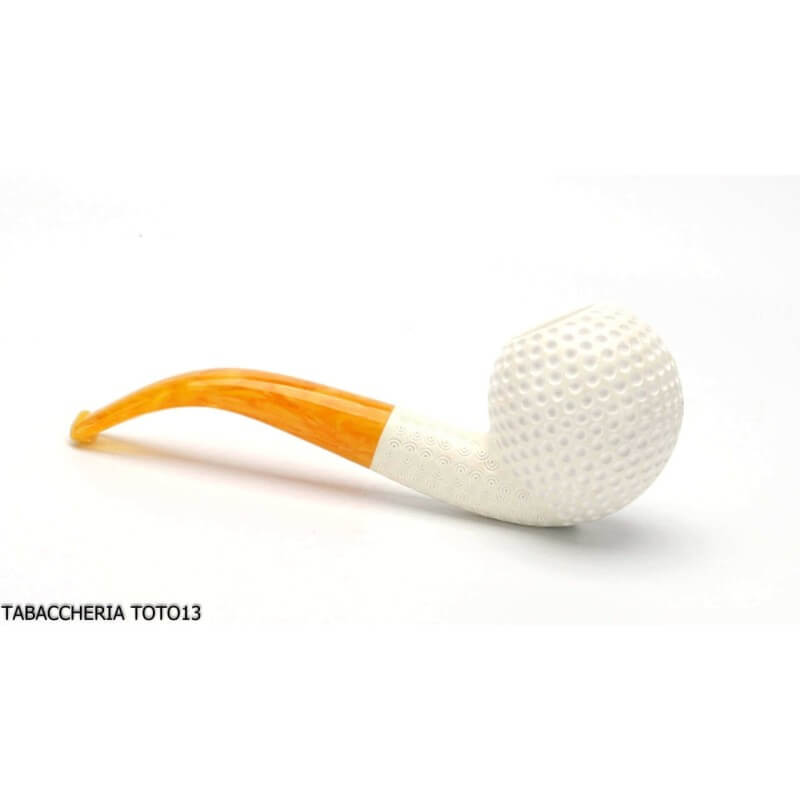- Out-of-Stock

Sea foam is generally known as the "white goddess" and its admirers emphasize in particular its yield.
Sea foam is composed of magnesium hydrate silicate (scientifically sepiolite) found in Turkey and Tanzania.
Its origin is uncertain, but it is assumed that the rivers of limestone have eroded the magnesia stones and deposited the formed mud.
Possible geological changes would have led to the change in the river's course, leaving behind at a depth of forty to eighty meters the alluvial deposits that would then be pressed into blocks following the pressure exerted by the tectonic masses overlying.
While there are countless legends on the birth date of the first pipe made from this particularly lightweight material, it is certain that the first European sea foam tubes were manufactured in Hungary and imported by some aristocrats in Vienna where a sea foam processing center developed.
Around 1870, over two hundred companies in the Austrian capital produced magnesium hydrate silicate pipes and the term "Vienna foam" was introduced in the literature on the pipes.
The best sea foam used in pipe manufacturing is the one block from Turkey.
The original material of Tanzania is geologically much younger than the Turkish one and does not confer the same yield and does not even present the same white color as the Turkish one, which is predominantly extracted from the surrounding Eskisehir region.
For low-priced pipes, the pressurized foam is made up of foam wastes held together by the pressure exerted by the binder.
The lower quality consists of mass sea foam, which also consists of waste, but. Contrary to what has been described above, they are ground in a mash that, when added water, potassium silicate and potassium salts, is boiled for processing purposes.
Block-shaped foam tubes are usually made to the lathe.
First, the blocks are cut to the right size, softened in water, and finally, still damp, torn and drilled, and often the works of
While in the past the heads were turned or sculpted in whalebone, today they are referred to in light white wax.
Foam tubes have captured many smokers because they do not require insection, do not burn and allow tobacco to preserve its aroma.
1) Width 145 mm
2) height 50 mm
3) 48 mm depth
4) fireplace diameter 20 mm
5) Fireplace depth 41 mm
mouthpiece 6 mm diameter no filter, amber bocchinometacrilate.
weight: grams 42
shape: golf ball, bent classical curve.
finish: white to golf ball.
markings: none.
You might also like